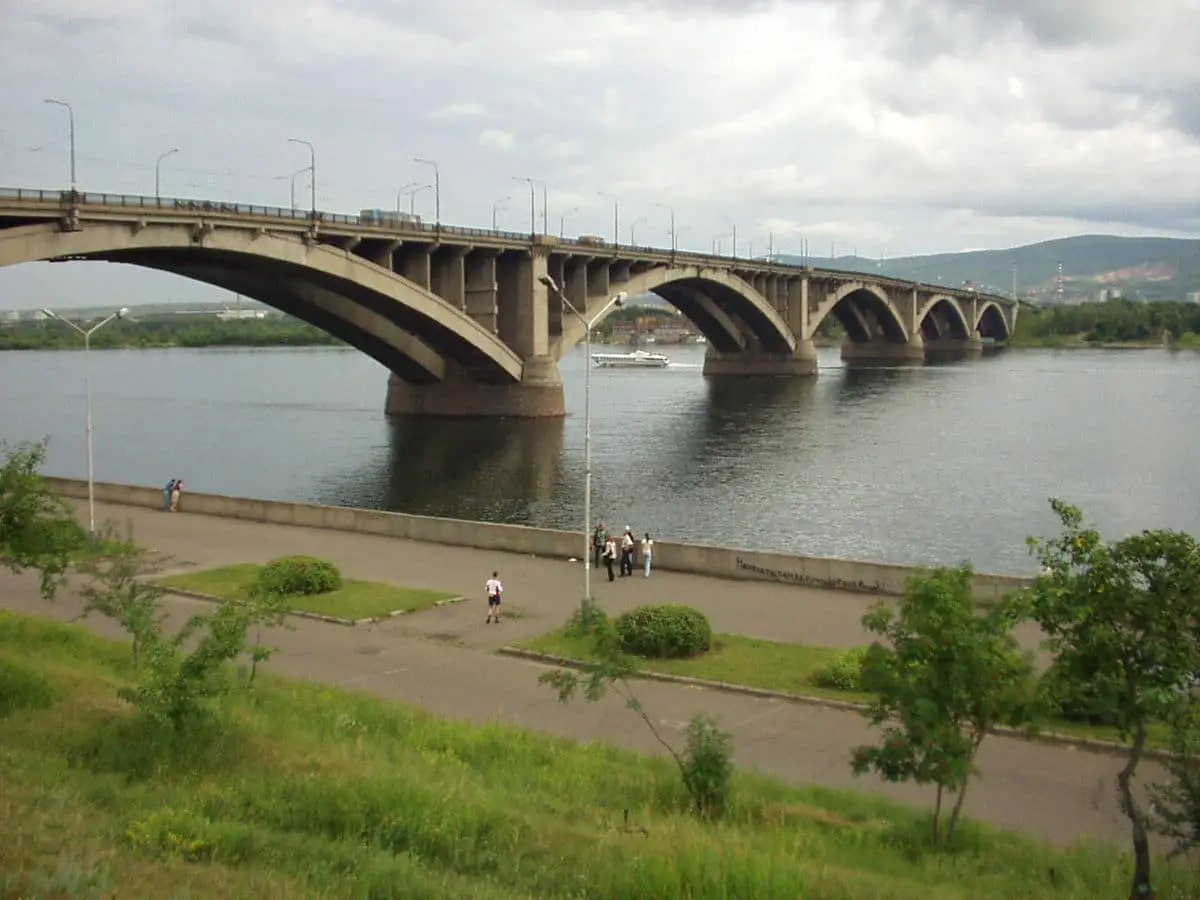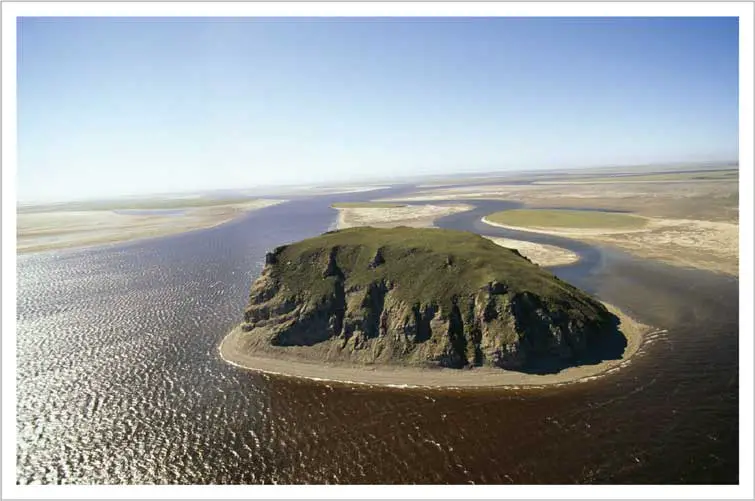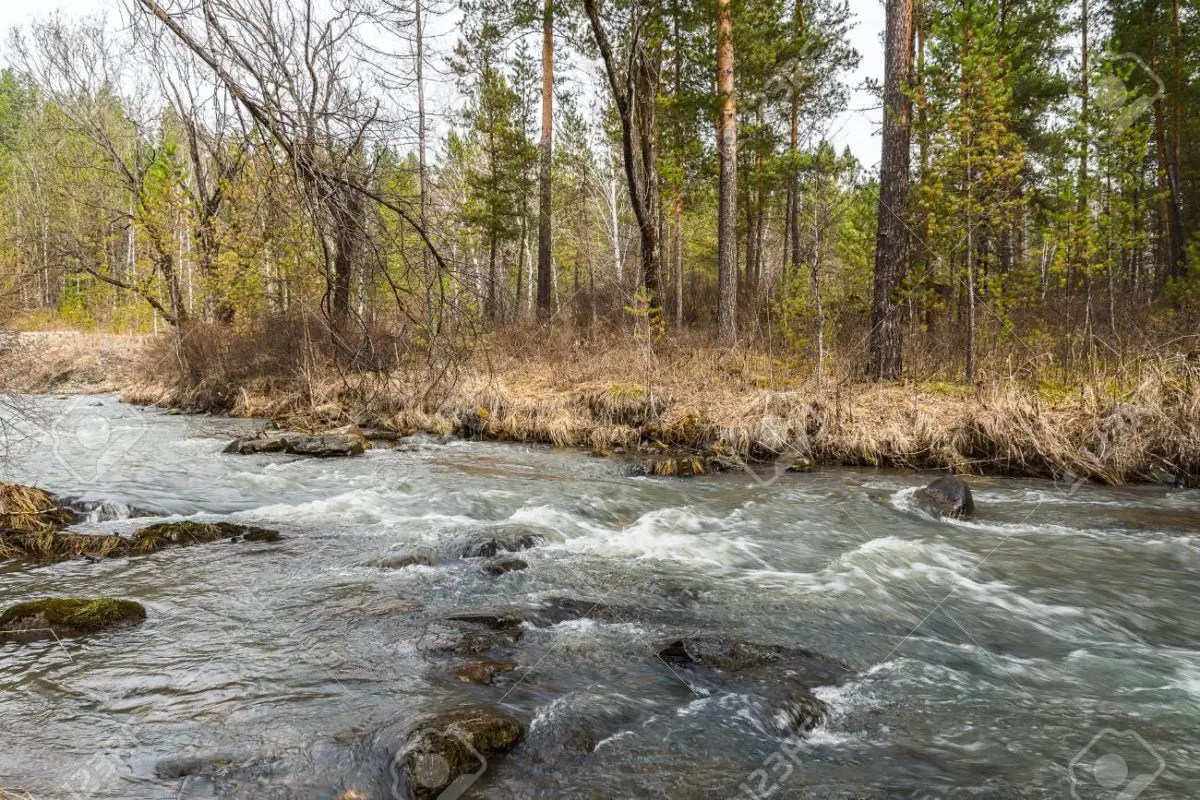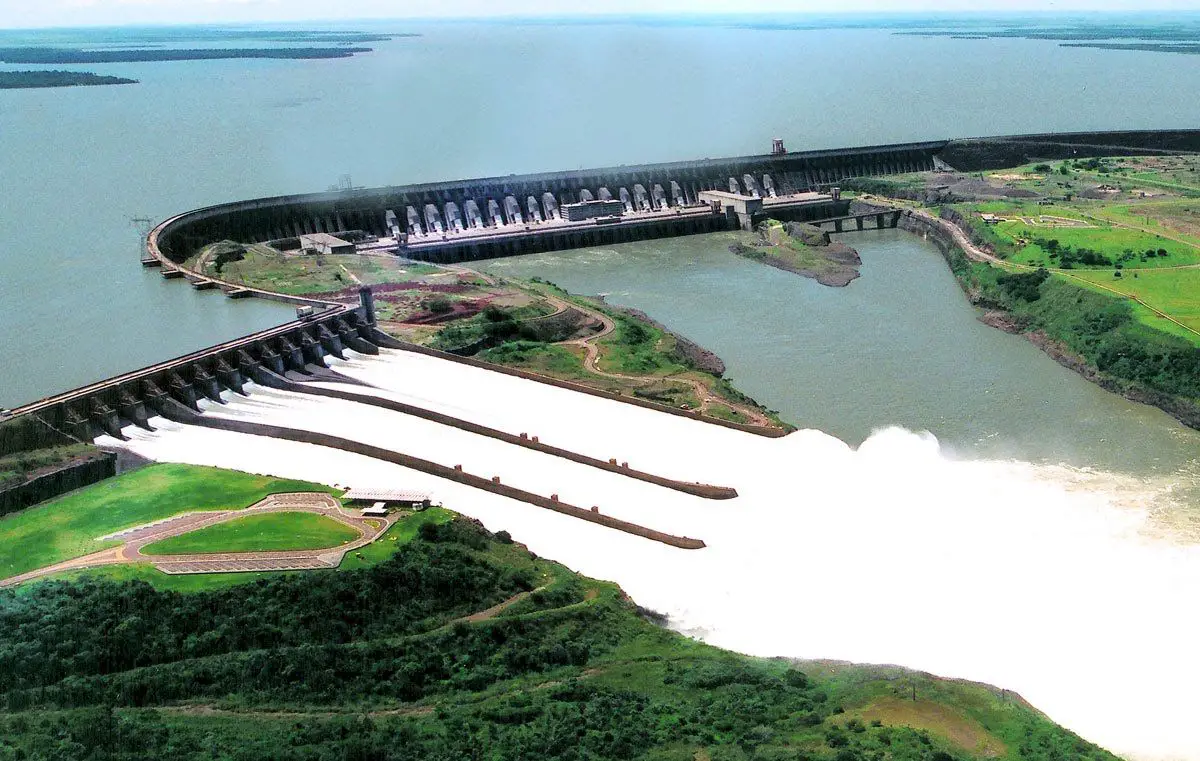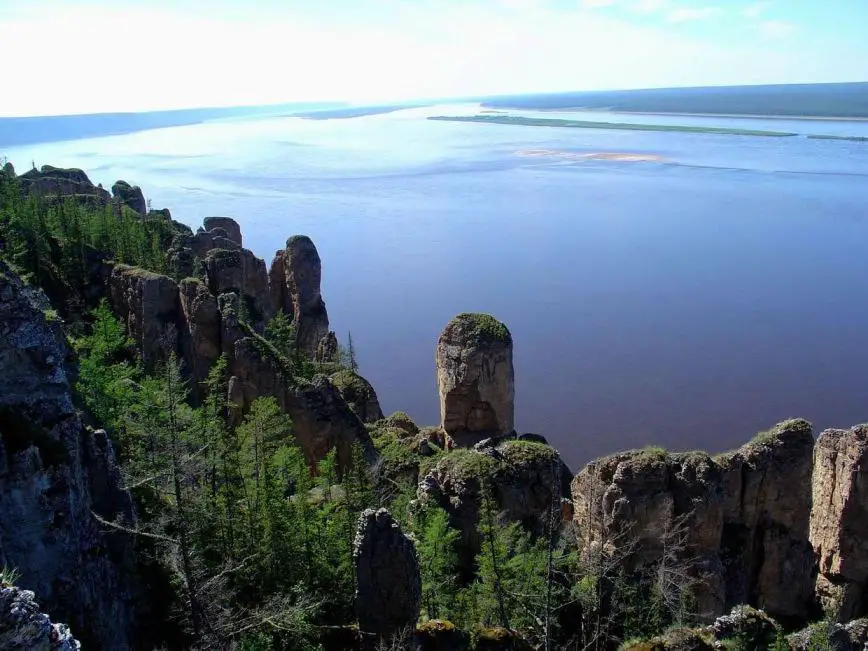It belongs to Siberia, the Asian part of Russia. Its more than 4,000 km and its brotherhood with the Yenisei-Angara-Lake Baikal-Selenga-Ider system make it the fifth longest river in the world, totalling 5,539 km. We are talking about the majestic Yenisei River.
Indice De Contenido
Source and mouth of the Yenisey River
It rises in Tuva, in the Darkhad Valley (Mongolia). It is the longest river in Russia and the fifth longest in the world after the Amazon, the Nile, the Yangtze and the Mississippi-Missouri. Its basin covers an area of 2,580,000 square kilometres. The Angará and Podkámennaya Tunguska Rivers are its main tributaries (see: Tiger River).
Headwaters
The Yenisei rises in Kizil (Tuva) from the confluence of the Bolshoi Yenisei (Great Yenisei) and Mali Yenisei (Little Yenisei) rivers. Its turbulent waters flow through the gorges of the Sayan Mountains and then ease before flowing through the taiga, a region of grain crops, coniferous forests and tundra. From there it flows into the Gulf of Yenisey (see: Colorado River).
Basin
The river flows for 2,900 kilometres through the Sayan and Krasnoyarsk hydroelectric power stations in its upper reaches, and through the cities of Kizil, Sayanogorsk, Abakan, Divnogorsk, Krasnoyarsk and others. In winter, from November to May, the water freezes over and it is impossible to sail on it.
Mouth
The Yenisei River after its long journey through the Siberian plains, areas full of forests and tundra, conifers, lichens and mosses, leaves to enter the Kara Sea in the Arctic Ocean; it is a sea of very cold waters that freezes for up to nine (9) months a year. Its sailing season is between July and August.
It is there, in the Yenisei Gulf, an arm of the Kara Sea and an estuary of about 400 km, that the Yenisei, the Bolshaya Keta and the lower Tunguska, other important rivers in Asia, flow into the Yenisei (see: Obi River).
Countries crossed by the Yenisei
The Yenisei River on its northern course makes a part of its journey through the following countries of Russia: Tuva and Khakassia.
Tuva
It is one of twenty-one republics located in Siberia, Central Asia, and its capital is Kizil. It participated in the Second World War in support of the Soviet Union, providing much needed aid to the Soviet army in the form of coats, gloves, skis, boots, food, medicine and much more.
The economy is based on industry, especially timber, building materials and metals; agriculture, with cereal crops such as wheat and barley; mining, especially coal and salt; game farming, hunting, livestock, fishing and, in some areas, forestry.
Khakassia
Its capital is Abakan. It is also one of Russia’s eighty-five federal subjects. Its capital concentrates the country’s largest population and is the main administrative and financial centre of Khakassia. It is a mountainous region where it is pleasant to walk through the countryside of firs, birches, cedars and meadows.
Bridges and other landmarks
Asia, being a vast and progressive territory, has outstanding engineering works that impress locals and foreigners alike. Bridges are one example.
Kommunalni Bridge
Inaugurated in 1961, it comes from the word communal and is built in the city of Krasnoyarsk. It is 2.3 km long and used to be the longest bridge in Asia until it was replaced by the 5 km long Ghandi Setu Indian Bridge (1982).
Krasnoyarsk Reservoir
After the Bratsk Reservoir, this is one of the largest reservoirs in the world. It starts in Abakan and ends at the Krasnoyarsk hydroelectric dam (see: Ebro River).
Krasnoyarsk
This is the most important city in Siberia. It is the centre of the economic and cultural sector, with beautiful scenery, mountains, forests and protected parks, and is located on both sides of the Yenisei River, which gives it a special charm. There are more than thirty universities, making it an educational city.
The main ports are Krasnoyarsk, Abakan, Maklakovo, Arrow, Igarka, Yeniseisk among the most important. It has an international airport.
Krasnoyarsk Pillar Park
Hundreds of huge pillar-like rocks rise from the taiga forest that protects Stolby Park, a nature reserve. They appear to be of volcanic origin, having erupted more than 370 million years ago. The pillars have names that symbolise stories and anecdotes from locals and visitors.
Brown bear, wolf, lynx, fox, badger, roe deer and elk can be found in this nature reserve, but the most prominent is the Siberian deer. The park is dominated by spruce.

